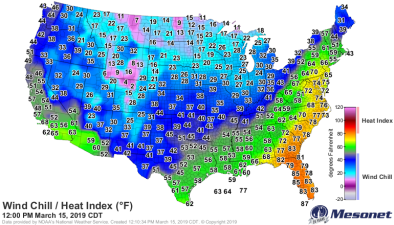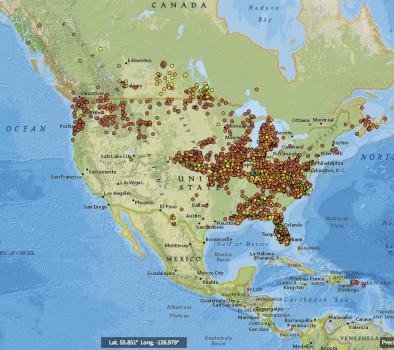Extreme Jet Stream and Texas Heat Wave July 2018
A heat wave across Texas tested the state’s electrical grid and endangered residents in mid-July. The record-breaking heat in Texas was one of many global extreme events, from deadly wildfires in Greece to heat waves in Japan[1], tied to the unusual and persistent jet stream in place during the month.
Climate change has played two different roles in the string of record-breaking weather observed across the globe: (1) the overall warming due to human greenhouse gas emissions amplifies heatwaves, pushing temperatures to new extremes, and (2) climate change is increasing the frequency of unusual jet stream configurations.


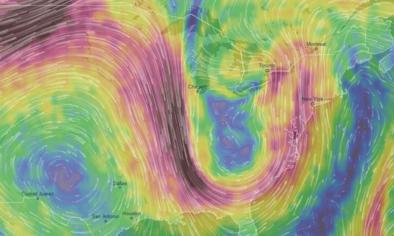
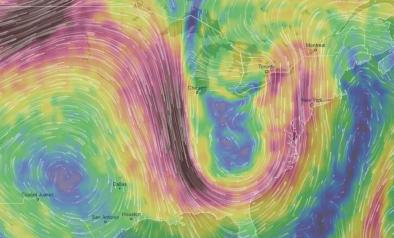

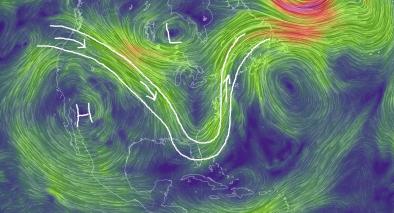

Climate science at a glance
- The Texas heat wave may be driven by a climate change double whammy: a thermodynamic contribution and dynamic circulation contribution.
- Climate change attribution analysis has shown that 82 percent of recent extreme heat records globally would not have broken the prior record but for the amplification of global warming.[1]
- The fingerprint of climate change has been identified in the extreme heat observed in Texas during the summer of 2011.[2][3][4]
- Global warming has now gone beyond adding energy to the thermodynamic dimension of our climate and is now messing with atmospheric circulation, including the jet stream.
- Atmospheric blocking due to anomalous, persistent, meandering of the jet stream often causes weather extremes in the midlatitudes.[5]
Climate signal breakdown
Climate signal #1: Extreme heat and heat waves
Blaming record-obliterating heatwaves on a weird jet-stream is like blaming the engine for accelerating the car. The real issue is: where did the extra fuel come from, the fuel that pushed heat extremes past prior records? The direct cause of the extreme heat in Texas was the unusual jet stream pattern, which acted as the engine driving persistent heat. Global warming was the proximate cause of the record temperatures, because it provided extra fuel that pushed high temperatures past prior records.
The overall warming driven by carbon pollution is amplifying heatwaves. Studies show global warming is responsible for pushing temperatures past prior record levels in 82 percent of record-setting extreme heat events around the world in recent years.
It is important to know that any heat wave has both natural and now, human causes. So in plain language, climate change simply makes these heat waves hotter than they would have been otherwise.[6]
-- Michael Wehner, Senior Staff Scientist at Lawrence Berkeley
Observations consistent with climate signal #1
- July 23, 2018 was the hottest day on record for Waco as temperatures climbed to 114°F. This beat the previous record high temperature by 2°F and was the seventh day in a row to break daily heat records.[7][8]
- The capital city of Austin set a new monthly record on July 23rd at 109°F, which tied for the fourth hottest day on record.[9]
- Multiple Texas cities reported five to seven days in a row with temperatures over 100°F.[7][10]
- A heat burst in the towns of Breckenridge and Eastland in North Texas sent temperatures soaring in the early morning on July 22. The temperature at the Stephens County Airport just outside Breckenridge fell to 85°F at 12:15 am CDT, but by 1:35 am, it reached 99°F.[11]
Climate signal breakdown
Climate signal #2: Atmospheric blocking increase
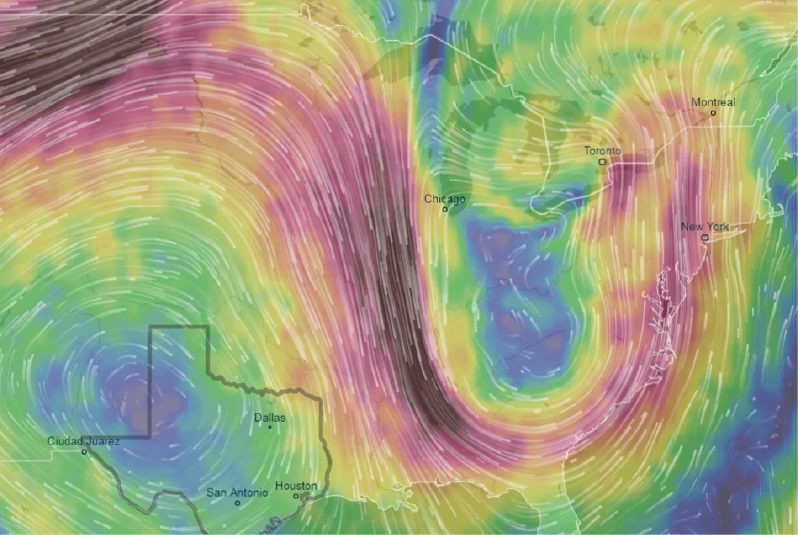 Natural changes in global atmospheric circulation are the engines driving many weather events, but climate change is increasing the frequency of unusual jet stream configurations. The heat wave in Texas, as well as many other global extremes during July — including wildfires in California, Scandinavia, and Greece, record heat in the southwestern US, Europe, and Japan, and flooding rains along the US East Coast — fit this pattern. In Texas, the result was record-breaking heat that pushed temperature extremes way past historical levels.[6][12]
Natural changes in global atmospheric circulation are the engines driving many weather events, but climate change is increasing the frequency of unusual jet stream configurations. The heat wave in Texas, as well as many other global extremes during July — including wildfires in California, Scandinavia, and Greece, record heat in the southwestern US, Europe, and Japan, and flooding rains along the US East Coast — fit this pattern. In Texas, the result was record-breaking heat that pushed temperature extremes way past historical levels.[6][12]
We are seeing some extreme jet-stream behavior, where the jet stream is contorting into these extreme loops both sharply towards the poles with ridges of high pressure and dips to the equator with troughs of low pressure. The extreme configuration is getting stuck in place which means that places are getting long periods of extreme weather.
Jeff Masters, co-founder of Weather Underground in Ann Arbor, Michigan[6]
The extreme weather we're seeing around the Northern Hemisphere, such as heat waves, floods, droughts, and wildfires, is related to an unusual, undulating pattern in the jet stream . . . Our work shows that this sort of pattern, which has been associated with many of the most extreme, persistent weather events in recent years . . . is becoming more common because of human-caused climate change, and in particular, because of amplified Arctic warming.
Mike Mann, leading climate scientist at Penn State[13]
The very amplified, wavy jet-stream configuration and persistent weather conditions certainly jibe with expectations for a warming planet — especially a very warm Arctic — and further analysis may conclude that climate change contributed to this wavy jet stream in particular.
Jennifer Francis, a climate scientist at Rutgers who studies the changes in jet streams under a warming climate
Observations consistent with climate signal #2
Related Content



